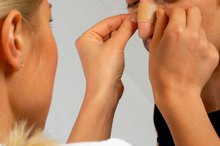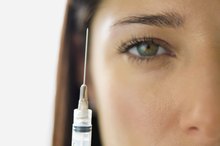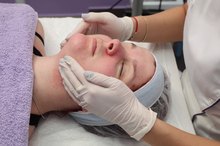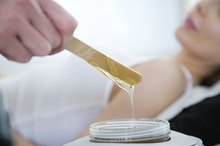What does fact checked mean?
At Healthfully, we strive to deliver objective content that is accurate and up-to-date. Our team periodically reviews articles in order to ensure content quality. The sources cited below consist of evidence from peer-reviewed journals, prominent medical organizations, academic associations, and government data.
The information contained on this site is for informational purposes only, and should not be used as a substitute for the advice of a professional health care provider. Please check with the appropriate physician regarding health questions and concerns. Although we strive to deliver accurate and up-to-date information, no guarantee to that effect is made.
Skin Bleach for Scars
When your skin becomes damaged enough to leave a scar behind, the scar may be discolored. While the level of skin scarring differs for every person, for some the scar can be highly noticeable. Using a skin bleach cream for scars can help to remedy some of this occurrence. However, it is important to use the bleaching cream with care and often in order to see the effects.
Significance
When you have a scar, the change in the color of your skin tone is actually a sign of inflammation -- known as post-inflammatory hyperpigmentation -- according to Dr. Audrey Kunin, a dermatologist writing for DERMA Doctor. Those with pale skin experience scars that tend to be pink, red or purple scars while those with darker skin tones experience black or brown areas of scar tissue. Although the pigmentation will fade over time, it will typically not fade completely. As a result, you may choose to use a bleaching cream to reduce the incidence of excess pigmentation.
- When you have a scar, the change in the color of your skin tone is actually a sign of inflammation -- known as post-inflammatory hyperpigmentation -- according to Dr. Audrey Kunin, a dermatologist writing for DERMA Doctor.
Types
Tretinoin Cream for Wrinkles
Learn More
Recommended skin bleaching ingredients vary based on desired results and your skin type, according to Dr. Kunin. Examples include hydroquinone, a skin lightener that reduces the melanin production in your skin when applied. Other examples include glycolic acid, which encourages skin exfoliation, or the burning off skin cells. Other examples include tretinoin and cortisone, which can be combined with hydroquinone in prescription treatments, according to the American Osteopathic College of Dermatology.
- Recommended skin bleaching ingredients vary based on desired results and your skin type, according to Dr. Kunin.
- Other examples include glycolic acid, which encourages skin exfoliation, or the burning off skin cells.
Time Frame
Skin bleach for scar treatment requires frequent application in order to be effective, according to the American Osteopathic College of Dermatology. If you apply the cream daily, it may take between three to six months to notice a difference.
Considerations
Can Damaged Collagen Naturally Restore Itself?
Learn More
When you are utilizing a skin lightening treatment cream for your scars, it is important to wear sunscreen. Skin lightening creams affect your skin’s sensitivity to the sun, meaning your skin can burn more easily, according to the Cleveland Clinic. Also, scars are can further change color when exposed to ultraviolet radiation. If you do not carefully protect your skin against the sun, you may undo the work you have performed to lighten your scar.
- When you are utilizing a skin lightening treatment cream for your scars, it is important to wear sunscreen.
Warning
Skin bleaching creams can be irritating to the skin. For this reason, they are often available only by prescription so a physician can monitor progress and minimize side effects, according to the Cleveland Clinic 1. If you experience adverse symptoms or your skin appears to be getting worse instead of better, talk to your physician. She may recommend reducing the concentration or switching to another medication in order to minimize adverse effects.
- Skin bleaching creams can be irritating to the skin.
- She may recommend reducing the concentration or switching to another medication in order to minimize adverse effects.
Related Articles
References
- Cleveland Clinic: Prescription Medications for Skincare
- The Campaign for Safe Cosmetics: Hydroquinone
- Wang F, Li X, Wang X, Jiang X. Efficacy of topical silicone gel in scar management: A systematic review and meta-analysis of randomised controlled trials. Int Wound J. 2020 Jun;17(3):765-773. doi: 10.1111/iwj.13337
Writer Bio
Rachel Nall began writing in 2003. She is a former managing editor for custom health publications, including physician journals. She has written for The Associated Press and "Jezebel," "Charleston," "Chatter" and "Reach" magazines. Nall is currently pursuing her Bachelor of Science in Nursing at the University of Tennessee.









